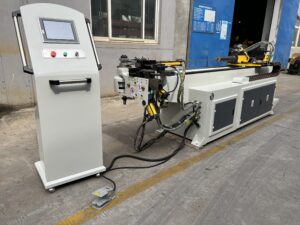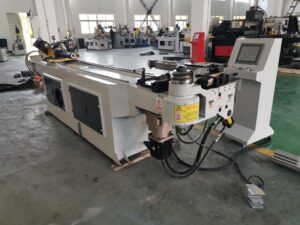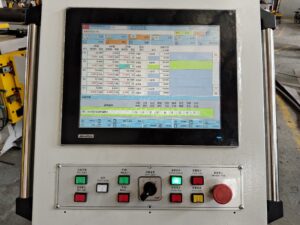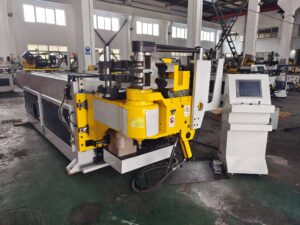How to Cut Copper Pipe Like a Pro: A Comprehensive Guide
Copper piping remains a cornerstone of plumbing systems in residential and commercial buildings. Its durability, corrosion resistance, and ease of working with make it a preferred material for water supply lines, heating systems, and refrigerant lines. However, achieving clean, burr-free cuts is crucial for ensuring leak-proof joints and long-lasting performance. This guide will walk you through everything you need to know about using a tube cutter copper pipe effectively, from selecting the right tool to mastering the technique and troubleshooting common issues. We’ll cover safety precautions, different types of tube cutters, and best practices for achieving professional-quality results.

Why Use a Tube Cutter for Copper?
While hacksaws, abrasive saws, and even rotary tools can cut copper pipe, a dedicated tube cutter offers significant advantages. These advantages translate to better quality work, reduced material waste, and increased efficiency. Here’s a breakdown:
- Clean Cuts: Tube cutters create a clean, square cut that minimizes burrs and deformation. This is vital for proper soldering, brazing, or using compression fittings.
- Minimal Material Waste: The cutting wheel concentrates force, resulting in very little copper “dust” or material loss.
- Reduced Risk of Work Hardening: Abrasive cutting methods can work-harden the copper at the cut point, making it brittle and prone to cracking. Tube cutters avoid this.
- Faster & Easier: Once mastered, a tube cutter is significantly faster and less physically demanding than other cutting methods.
- Professional Results: Clean, square cuts are a hallmark of professional plumbing work.
Types of Tube Cutters for Copper Pipe
Choosing the right tube cutter depends on the size and frequency of your projects. Here’s a look at the most common types:
- Wheel Cutters (Standard Tube Cutters): These are the most common type, ideal for general plumbing and HVAC work. They consist of a frame, a cutting wheel (typically hardened steel), and a feed screw. The wheel is tightened around the pipe, and the feed screw is turned to gradually advance the wheel, cutting through the copper. They are available in various sizes to accommodate different pipe diameters.
- Automatic Feed Tube Cutters: These cutters automatically tighten the wheel as you turn the feed screw, requiring less manual effort. They are particularly useful for cutting larger diameter pipes or for repetitive cuts.
- Mini Tube Cutters: Designed for tight spaces and smaller diameter tubing (e.g., refrigeration lines), these cutters are compact and maneuverable.
- Ratcheting Tube Cutters: These cutters utilize a ratcheting mechanism, allowing you to make small, incremental cuts with less effort. They are excellent for working in confined areas.
- Heavy-Duty Tube Cutters: Built for thicker-walled copper and other materials, these cutters feature robust construction and durable cutting wheels.
Choosing the Right Size: Tube cutters are sized to accommodate specific pipe diameters. Always select a cutter that matches the outer diameter of the copper pipe you’re working with. Using a cutter that’s too small will damage the tool and the pipe, while a cutter that’s too large won’t provide a secure grip.
Step-by-Step Guide: How to Cut Copper Pipe with a Tube Cutter
Now, let’s get into the practical steps. This guide assumes you’re using a standard wheel cutter, the most common type.
1. Safety First:
- Wear Safety Glasses: Copper filings can fly during the cutting process.
- Wear Gloves: Protect your hands from sharp edges and potential cuts.
- Work in a Well-Ventilated Area: While copper dust isn’t highly toxic, prolonged exposure should be avoided.
2. Prepare the Pipe:
- Mark the Cut Line: Use a marker or pencil to clearly indicate where you want to cut the pipe. Accuracy is key!
- Deburr Existing Cuts (If Applicable): If you’re working with a pre-cut piece of pipe, ensure the end is deburred to provide a clean starting point.
3. Apply the Tube Cutter:
- Open the Cutter: Loosen the feed screw to open the cutter jaws.
- Position the Cutter: Place the cutter around the pipe, aligning the cutting wheel with your marked cut line. Ensure the cutter is perpendicular to the pipe.
- Tighten the Cutter: Slowly tighten the feed screw until the cutting wheel makes firm contact with the pipe. Don’t overtighten – you want the wheel to bite into the copper, but not crush it.
4. The Cutting Process:
- Rotate the Cutter: Turn the cutter body one full rotation (360 degrees). Apply consistent, even pressure as you rotate.
- Advance the Cutter: Tighten the feed screw slightly (about ¼ to ½ turn). This advances the cutting wheel further into the pipe.
- Repeat: Continue rotating the cutter and advancing the feed screw in small increments. You’ll feel the resistance decrease as the wheel cuts through the copper.
- Final Cut: As you approach the completion of the cut, reduce the amount you tighten the feed screw with each rotation. This prevents the wheel from binding and ensures a clean separation. You’ll feel the pipe “give” when it’s almost completely cut through.
Troubleshooting Common Issues
- Cutter Binding: If the cutter binds, stop immediately. Loosen the feed screw slightly and try rotating the cutter in the opposite direction. Ensure the cutter is perpendicular to the pipe.
- Oval Cuts: Oval cuts are usually caused by uneven pressure or a misaligned cutter. Double-check that the cutter is perpendicular to the pipe and apply consistent pressure throughout the cutting process.
- Burrs: If you’re struggling to remove burrs, try using a sharper deburring tool or a finer file.
- Cutting Wheel Dullness: Cutting wheels will eventually dull with use. Replace the wheel when it becomes difficult to cut through the copper.
- Pipe Deformation: Avoid overtightening the cutter, as this can deform the pipe.
Maintaining Your Tube Cutter
Proper maintenance will extend the life of your tube cutter and ensure consistent performance.
- Clean the Cutter: After each use, wipe down the cutter with a clean cloth to remove copper filings and debris.
- Lubricate the Feed Screw: Apply a small amount of lubricant (e.g., light machine oil) to the feed screw to keep it moving smoothly.
- Replace the Cutting Wheel: Replace the cutting wheel when it becomes dull or damaged.
- Store Properly: Store the cutter in a dry, protected environment.
Case Study: Replacing a Burst Copper Pipe in a Residential Bathroom
The Situation: A homeowner in Denver, Colorado, experienced a burst copper pipe under their bathroom sink. The pipe had corroded over time, leading to a pinhole leak and significant water damage. They needed a quick and reliable solution.
The Approach: I was called in to assess the damage and perform the repair. After shutting off the water supply, I carefully cut out the damaged section of pipe using a RIDGID 300 CompactConnect Tube Cutter (1/2″ – 3/4″). I chose this cutter for its ease of use and ability to work in the tight space under the sink. I followed the steps outlined above, ensuring a clean, square cut on both ends of the remaining pipe. I then deburred and reamed the pipe using a RIDGID deburring and reaming tool. A new section of copper pipe was measured, cut (using the same tube cutter), and prepared. The new section was then soldered into place using lead-free solder and flux.
The Results: The repair was completed quickly and efficiently, with no leaks. The homeowner was pleased with the quality of the work and the minimal disruption to their daily routine. The use of a quality tube cutter was instrumental in achieving a professional-quality repair. The clean cuts ensured a strong, leak-proof solder joint, preventing future problems.
For more information, please click here



